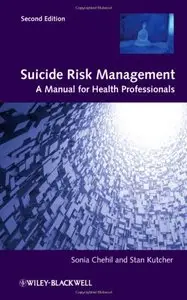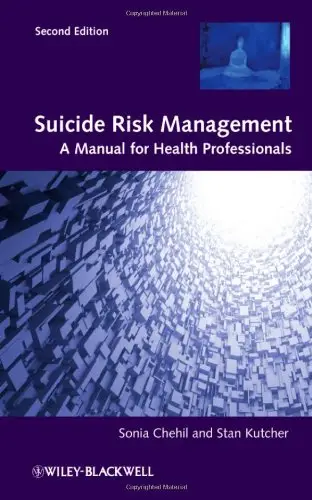Suicide Risk Management: A Manual for Health Professionals by Sonia Chehil and Stanley P. Kutcher
English | ISBN: 0470978562 | 2012 | 174 pages | PDF | 1,1 MB
English | ISBN: 0470978562 | 2012 | 174 pages | PDF | 1,1 MB
Suicide is a significant public health problem worldwide. Estimating prevalence in different countries is problematic as in many countries suicide is hidden and therefore 'prevalence estimates' taken from country records will likely underestimate real suicide rates.
In addition, different countries report marked differences in suicide rates and it is not clear as to why such differences occur. Nevertheless, based on available data, globally suicide is believed to account for an average of 10-15 deaths for every 100,000 persons each year and for each completed suicide there are up to 20 failed suicide attempts. Understanding suicide is unachievable. The underpinnings of suicide are diverse and multifaceted, involving a unique fusion of biological, psycho-social and cultural factors for each individual. Suicide is not an event that occurs in a vacuum. It is the ultimate consequence of a complicated process.This does not mean that health professionals should not know how to recognize, assess, and manage the suicidal patient. Indeed, this is a core competency that should be held by all health professionals, as many of their patients (including those without a psychiatric disorder) may face the prospect of suicide at some point in their lives. Many patients who experience suicidal thoughts or make suicide plans will change their minds about committing suicide. Many people who attempt suicide and are not successful go on to live productive lives. In some people a suicide attempt is an event that leads to a first contact with a helping professional.
That individual may be suffering from a mental disorder, which will respond to appropriate and effective treatment. That individual may have a chronic physical illness or be overwhelmed by life stressors and so may consider suicide as a viable solution to his/her dilemma. By knowing about suicide risk factors and how to identify and assist suicidal individuals and by targeting interventions towards modifiable factors and providing needed supports the health professional can assist in the patient choosing life rather than death.The objectives of this book are fourfold;To provide information regarding the epidemiology, risk factors and associated aspects of suicide.To provide information which will assist in the identification and assessment of suicide risk.To introduce the TASR: Tool for Assessment of Suicide Risk and provide instruction on its appropriate clinical application.To provide a continued self study program pertaining to clinical evaluation of suicide using the Suicide Risk Assessment Review (SRAR)The book is presented in a highly structured was with maximum use of bulleted lists, tables and flowcharts to describe in the most effective way possible how the many factors are used to assess the risk of suicide in an individual patient. It has a plasticised summary card inserted into a wallet at the back of the book which provides an "at a glance" guide to the assessment process.Professor Stan Kutcher is one of the world's leading authorities on child and adolescent psychiatry and is the author of several successful books and 150 papers. He is head of psychiatry at Dalhousie University in Canada and is an examiner for the Royal College of Physicians.



